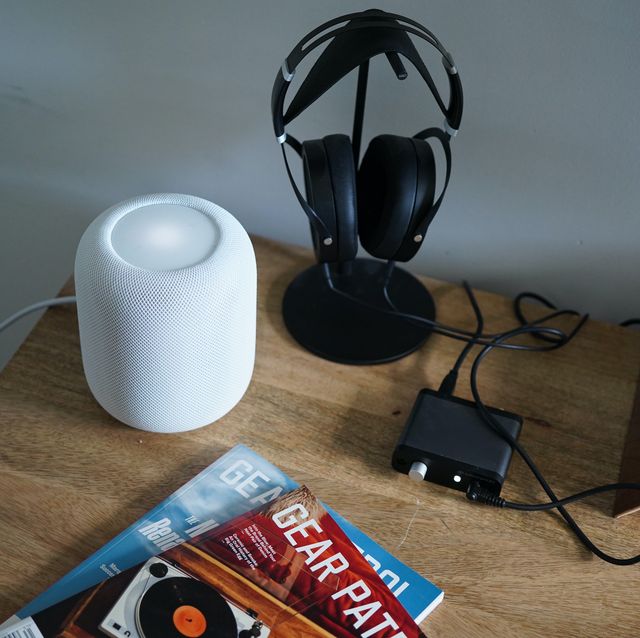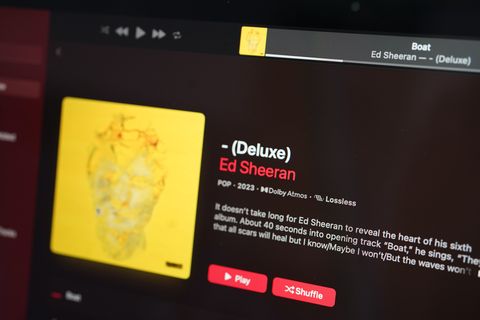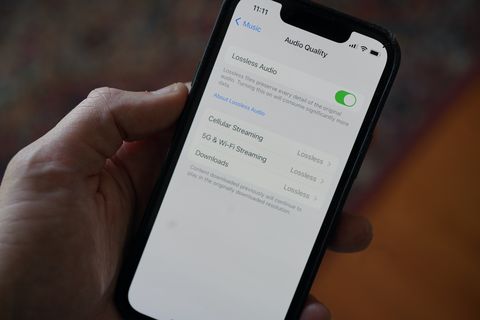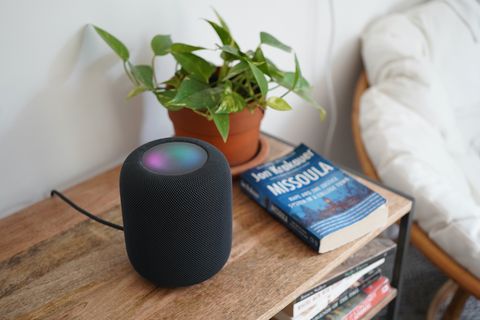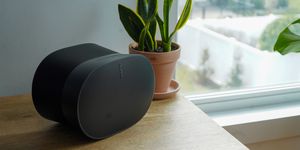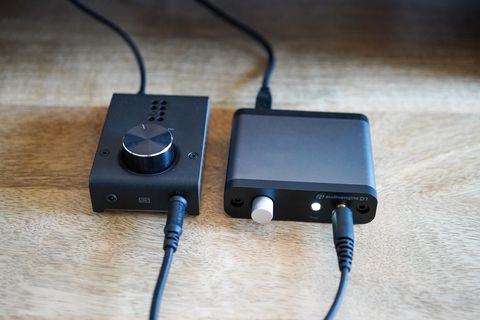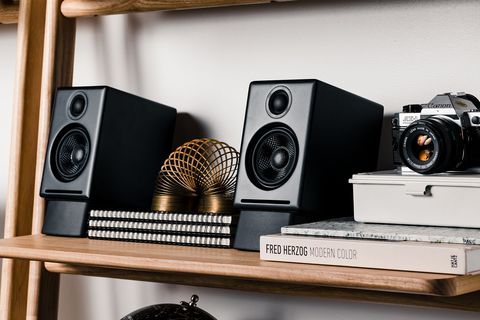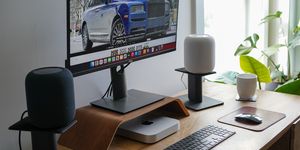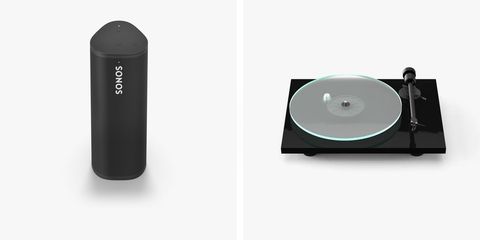If you are a paying Apple Music subscriber, you can listen to lossless-quality audio tracks. Since early June 2021, Apple has been updating its entire Apple Music catalog with its new lossless audio codec, Apple Lossless Audio Codec (ALAC).
There are two types of lossless tracks that Apple Music can play:
• Lossless: Each track is lossless CD-quality audio (16-bit/44.1 kHz), which is four times higher (or more) than the audio quality of the previous AAC audio tracks that you had been streaming. These lossless tracks can reach a maximum bitrate of 24-bit/48 kHz.
• Hi-Res Lossless: Apple offers even higher-resolution audio tracks called Hi-Res Lossless. These lossless tracks have a bitrate of up to 24-bit/192 kHz, but you need pretty specialized hi-fi hardware to listen to these tracks in all their glory.
As of May 2023, Apple Music has 90 million tracks coded in its lossless audio format. In order to listen to these lossless audio tracks, however, there are a couple things you need to know.
How to listen to Lossless Tracks on Apple Music
Step one: Make sure your Apple device is updated
First, you need to make sure that your Apple device is running updated software. Apple rolled out these updates in mid-2021, so it's very likely that your device is good to go, but it's worth knowing if you haven't updated it in years. Your device needs to be running:
- iPhone: iOS 14.6 (or later).
- iPad: iPadOS 14.6 (or later).
- Mac: macOS 11.4 (or later).
- Apple TV: tvOS 14.6 (or later).
Step two: Enable lossless streaming on your Apple device
You also have to bump up the audio quality in Settings to enable these lossless and high-resolution audio tracks. To enable lossless streaming on your iPhone, iPad, Mac or Apple TV:
- Open the Settings app.
- Select Music.
- Select Audio Quality.
- Select between Lossless and Hi-Res Lossless.
AirPods and other wireless headphones do not support lossless streaming — here's why
Of course, it's not just about having updated software, subscribing to Apple Music and toggling a few settings on your Apple device — you need the right hardware that can play these lossless audio tracks. Unfortunately, Bluetooth speakers or headphones can not do it because lossless audio files are too big.
If you listen to any of Apple's (or Beats's) wireless earbuds and headphones, such as AirPods, AirPods Pro or AirPods Max, you won't be able to experience lossless audio with them. The same is true for any other wireless headphones or earbuds from any manufacturer (such as Sony or Bose).
Wireless speakers can stream lossless tracks over Wi-Fi
In order to listen to Apple Music's new lossless audio and actually hear the difference, you need to have a wired connection or stream to a hi-fi system over Wi-Fi. Apple has rolled out updates to its smart speakers — the HomePod (Gen 1), HomePod mini and HomePod (Gen 2) — so that they do support ALAC audio files (up to 24-bit/48 kHz).
It's worth noting that most high-end wireless speakers can stream lossless audio tracks. However, whether they can stream lossless audio tracks from Apple Music is different. For example, Sonos speakers can stream lossless tracks (up to 48 kHz) from other lossless music services like Amazon Music Unlimited, but do not support lossless streaming on Apple Music. Not yet, anyway.
So before buying a wireless speaker, make sure to check if it supports lossless streaming from Apple Music.
If you have wired headphones, you also need a DAC
The simplest way to experience Apple Music's lossless audio tracks is through a wired connection. This means plugging a pair of wired hi-fi headphones directly into your iPhone or iPad — but there are a few things to know.
First, you must use a pair of wired headphones with a 3.5mm jack. This is problematic because most recent iPhones don't have a traditional headphone jack. Unfortunately, Apple's Lightning connection doesn't support lossless audio natively, which is why its AirPods Max (which uses a Lightning connection) can't play lossless audio tracks even when they're wired directly into your iPhone.
Instead, you'll also need Apple's Lightning-to-3.5mm adapter ($9) as well, which has a built-in DAC that supports lossless audio (up to 24-bit/48 kHz). This will let you listen to better quality audio, but not the best. To listen to the even higher-resolution audio tracks (up to 24-bit/192 kHz) that Apple Music now offers, you'll need a higher-quality DAC.
(Check out our guide to the best portable DAC/amps for your smartphone.)
Get a pair of powered speakers (for your Mac)
If you want to listen to Apple Music's lossless tracks on your Mac, you can plug your wired hi-fi headphones or a pair of powered computer speakers directly into your Mac — thankfully Apple hasn't gotten rid of the 3.5mm jack on any of its Macs. That said, you probably still want to get an external DAC.
Just like with iPhones, Apple's Macs can play the CD-quality audio files that Apple Music now offers but they aren't able to play higher-resolution lossless audio tracks without an external DAC. That said, we recommend buying an external DAC anyway because even if you don't plan on listening to these super high-resolution files, you'll definitely notice an improvement with an external DAC. And you don't have to buy an expensive one, either. There are great desktop DAC/amps for less than $200.
